Bad Company 2 - Going back to a time when Battlefield wasn’t afraid to tell a few jokes
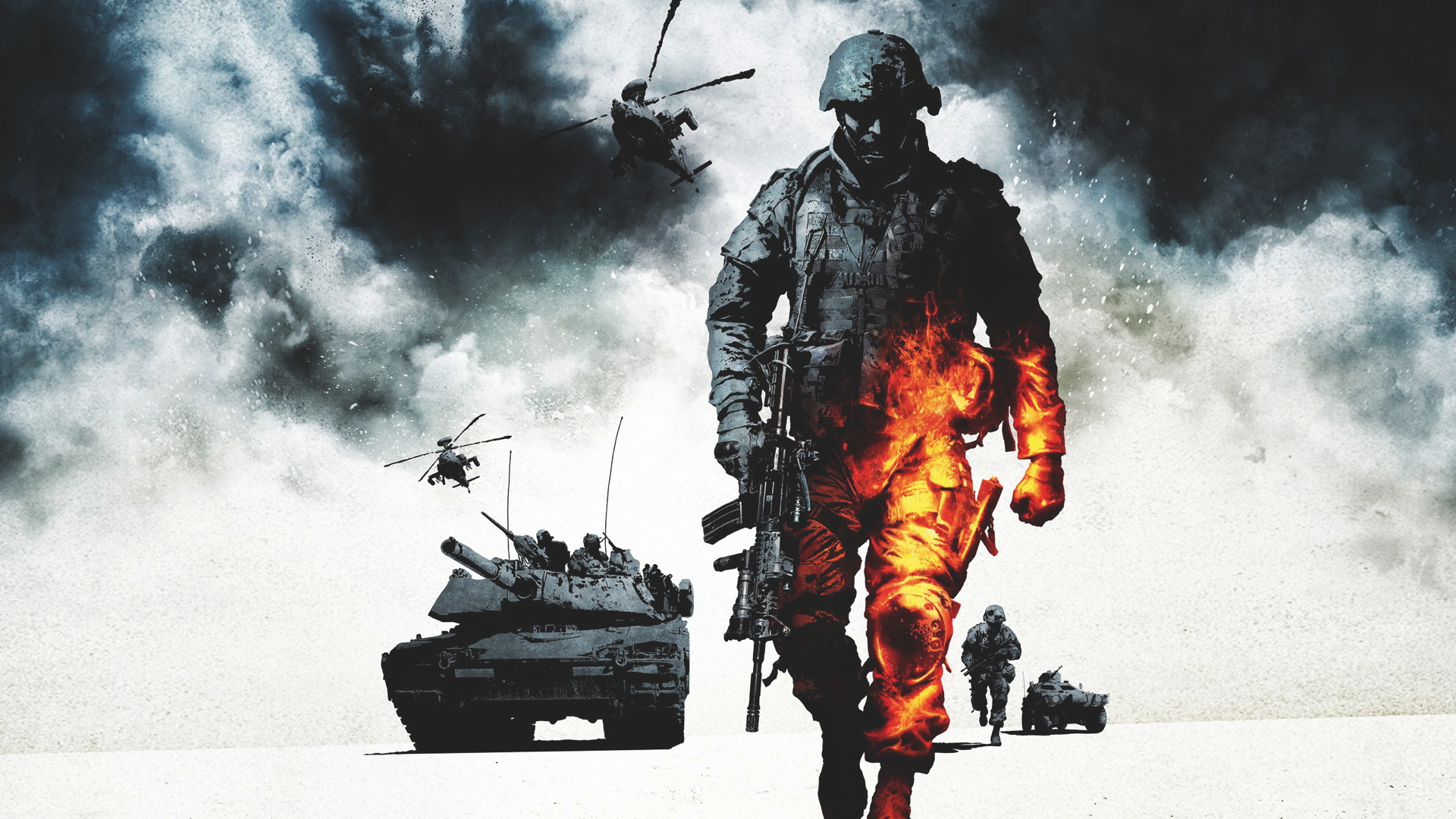
There was a moment, believe it or not, when this FPS behemoth didn’t take itself quite so seriously. Where Battlefield 1’s single-player campaign is mixture of harrowing battle scenes and spirited gallows humor (a vast improvement on BF4's angry-men-shouting-at-each-other approach), the Bad Company games are the complete opposite, following a squad of misfits caught up in a war between Russia and America. They’re written off by the US Army’s top brass as irresponsible cannon fodder, but prove themselves to be surprisingly capable on the battlefield despite their, er, colourful personalities.
Preston Marlowe is a cocky, mischievous sniper who ended up in Bad Company after crashing a helicopter into a general’s limousine. Terrance ‘Sweets’ Sweetwater is a twitchy technician who accidentally uploaded a virus to a military computer. George ‘Hags’ Haggard is a pyromaniac redneck who blew up an ammo depot. And Samuel ‘Sarge’ Redford is the leader, who only joined Bad Company because he was promised an early discharge from the army if he did so. It’s a motley, ragtag bunch, and their inability to behave like professional soldiers is a frequent source of amusement.
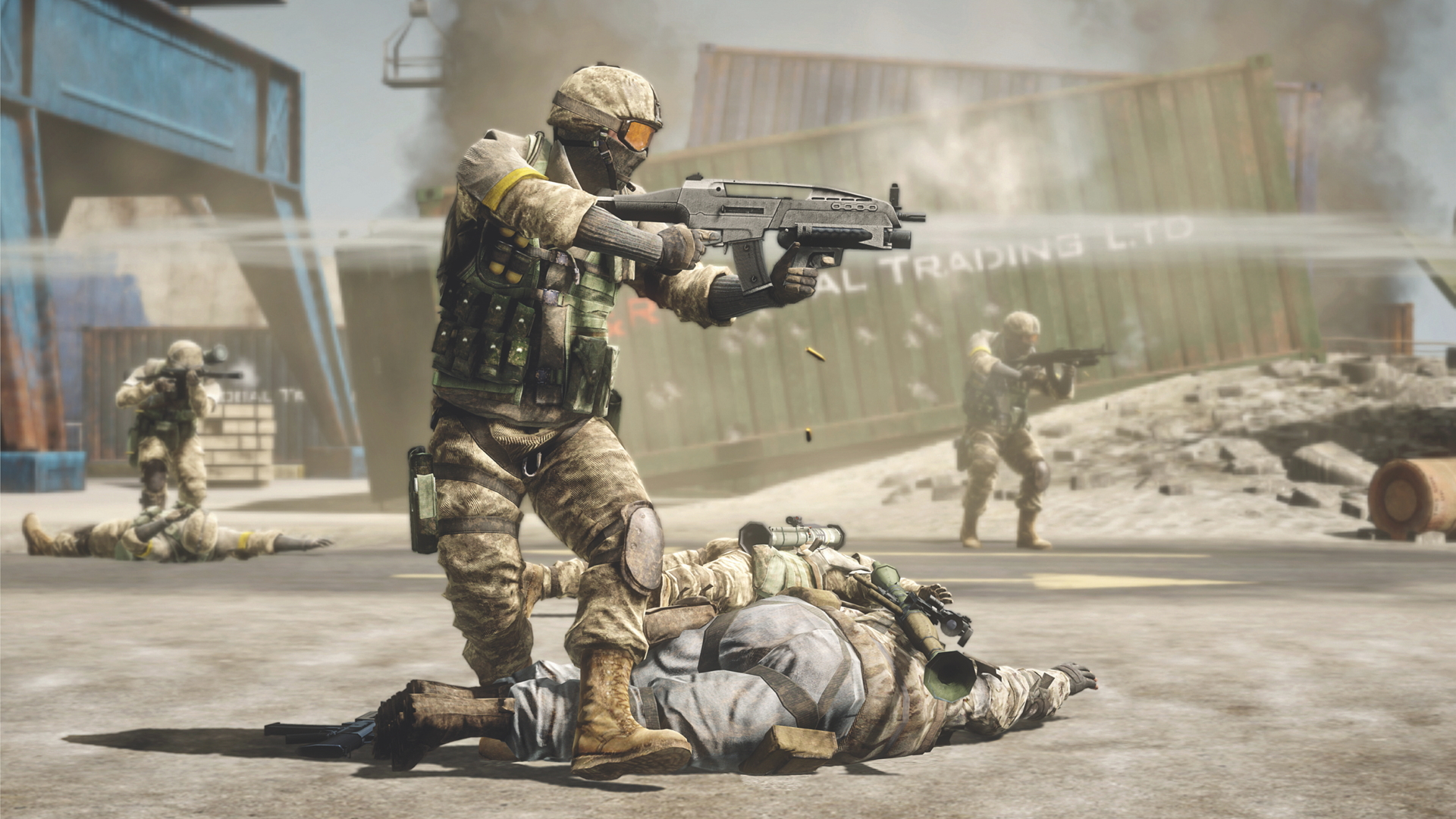
The original Bad Company, released on Xbox 360 in 2008, was the first game to use DICE’s proprietary Frostbite engine – which, in fact, EA is still using today, for games as diverse as Dragon Age and Star Wars Battlefront. A technology called ‘tactical destruction’ (DICE loves a good buzzword) lets you blast the game’s levels apart, blowing chunks out of walls and levelling buildings. There’s nothing to match the scale of Battlefield 4’s collapsing skyscraper in Bad Company, but it was impressive at the time, and was one of the game’s biggest selling points. Destructible scenery is a fairly standard thing in today’s first-person shooters, but in the gaming sphere of eight years ago, just the promise of it was enough to ignite people’s appetites.
In multiplayer, a reliably strategic, and dramatic, use of this tech is setting the charge at a control point, covering the walls in C4, then hiding outside. The enemy team will inevitably make a dash for the pot to disarm the charge, at which point you click your detonator and watch with glee as the entire building collapses on them, earning you a mountain of XP. Several games, notably Red Faction, featured destructible levels, but Bad Company was one of the first to have meaningful tactical applications.
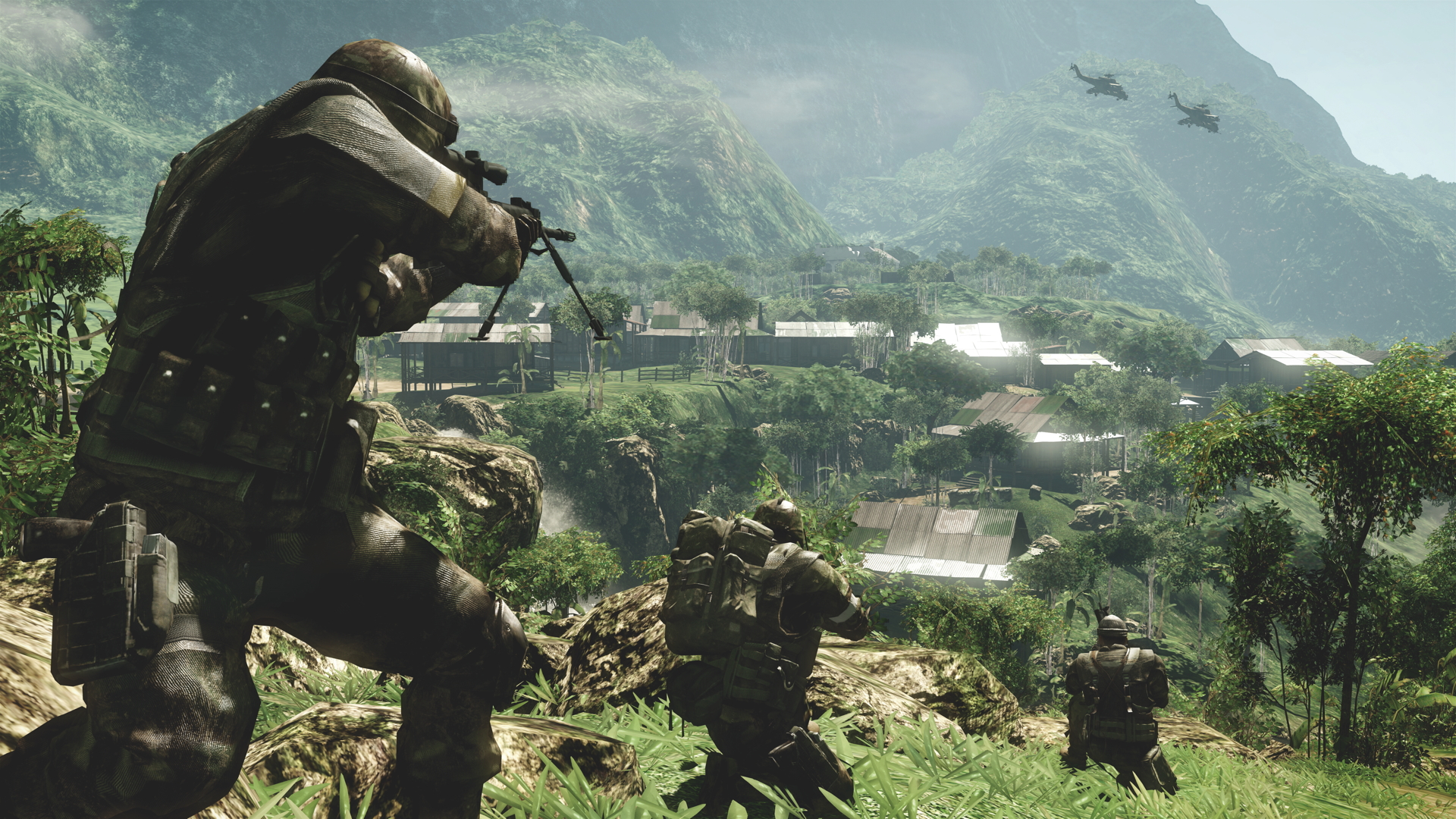
There was also something irresistible about destroying a building in multiplayer and knowing that other players on the map could witness your handiwork. When the game was announced, DICE made its tongue-in-cheek approach clear by parodying various games in their trailers. In one, which pokes fun at Gears Of War, Haggard runs through a ruined city as a haunting voice sings Mad World by Gary Jules. Then he stops and spins around to find Sweetwater singing the song, and starts yelling at him to shut up. It’s a perfect example of the series’ light-hearted tone. The humour could have easily been obnoxious, but the writers manage to keep the characters and dialogue on the right side of endearing.
In the first game, Bad Company goes up against a ruthless mercenary army allied with the Russians called Legionnaire. The squad learns that their mercenaries are paid in gold bars, and finding this treasure becomes their main objective, even though they’re supposed to be fighting for the Americans, not themselves. The game ends with them driving into the sunset in a truck loaded with bullion, but between this point and the beginning of Bad Company 2 they’re captured and returned to the front line. Now, however, thanks to their exploits in the first game, they’ve been given a special assignment to recover a dangerous EMP weapon from the Russians. The US Army still considers them a liability, but has begrudgingly acknowledged their skill in battle.
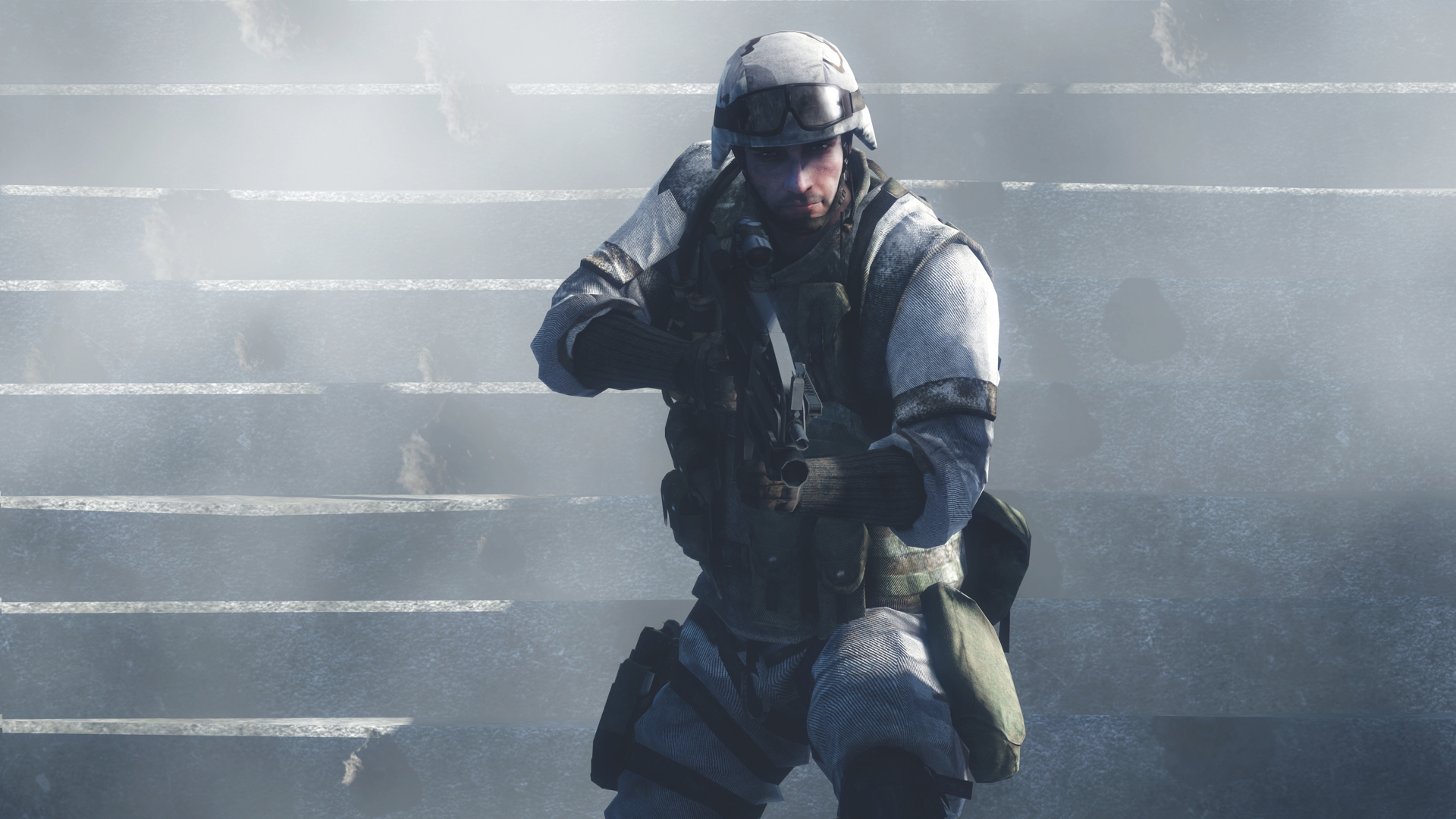
Before we rejoin the gang, the game takes us back to the autumn of 1944, to an island in the Sea of Japan. A small team of US commandos has been sent there to extract a Japanese scientist holding information that could turn the tide of the war, and you play as one of them. The opening is brilliantly atmospheric, with the squad moving along a foggy, moonlit river in a dinghy, deep behind enemy lines. As they sneak through enemy camps and try to locate the target, the sun slowly rises until the jungle is bathed in golden light. It’s aged quite a bit, but still looks very handsome in places.
Sign up to the GamesRadar+ Newsletter
Weekly digests, tales from the communities you love, and more
As you play, you occasionally hear a loud, machine-like groaning in the distance. This is later revealed to be the Aurora, an experimental EMP bomb that, at the end of the mission, you see being detonated in spectacular fashion. The operation is covered up by the US military and soon becomes a myth. Then we leap through time and join Bad Company in the present day. It’s a fantastic introduction, and one of the Battlefield series’ best, most evocative singleplayer sequences. It’s also a lot more serious than anything in the first game, which sets the tone for the rest of the story. The humour is still present, but the characters aren’t as self-centred as before.

DICE realised that, in the original, there was a disconnect between everyman Marlowe and the fact that, when you played the game, you become an unstoppable one-man army. “You were this ordinary guy, but when you were playing you were Action Jackson,” said producer Gordon Van Dyke in a 2010 interview. “So we wanted to fuse that together. We kept the same characters and the same voice actors, and didn’t lose our sense of humour, but made their goals more serious and had them fight for everyone, not just themselves.” The result is a leader and squad that are a lot more likeable, and who have a much more noble cause.
Russian colonel Arkady Kirilenko, the villain of the piece, is planning to trigger the EMP and disable America’s power grid, paving the way for an invasion. And, naturally, it’s your job to stop him. This does make it easier to root for the characters, and gives them a clearer goal, but it’s a fairly generic story compared to its predecessor. The heroes of a military FPS campaign chasing gold rather than glory was a unique spin on the formula, and one that DICE should consider returning to if it makes another Bad Company.
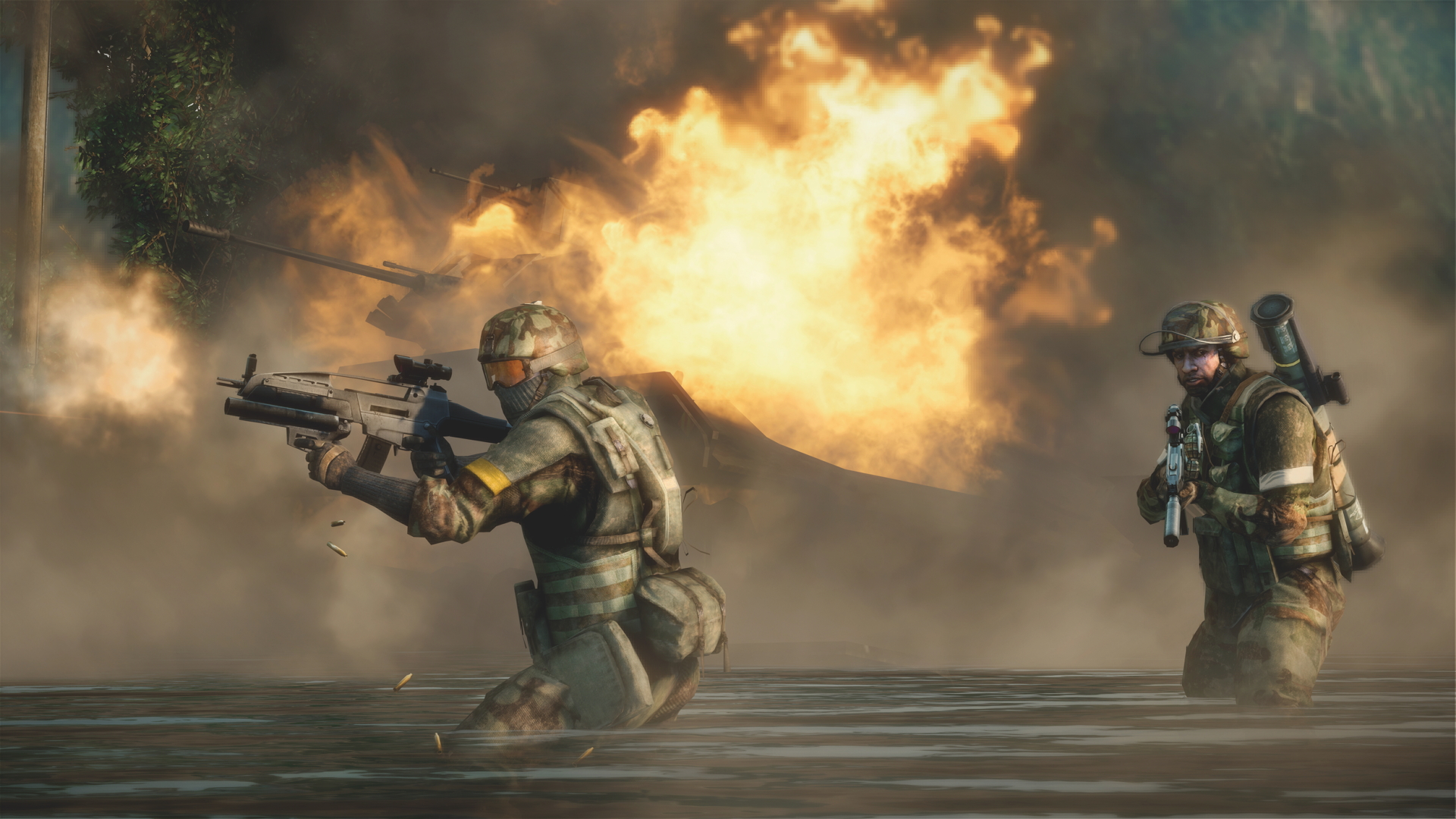
There are no plans for a sequel at the moment, though, despite the second game selling a tidy six million copies. “We’re not sure what people really liked about it,” said former DICE CEO Karl-Magnus Troedsson in a 2014 interview. “Some people say they found the multiplayer faster and more direct. Some liked the characters and the humour. People liked different things about it, and it’s scary to go back and try and remake a fan favourite when no one can really put their finger on what exactly it is people loved about it.”
The singleplayer campaign, though about as linear as it gets, makes ample use of large, open spaces, including ruined cities, mountain bases and vast, forested valleys. Like the multiplayer that made the series famous, it mixes air, vehicle and infantry combat to great effect, and though there are slightly too many on-rail sections, there’s a good amount of variety. Despite the squad’s best efforts, however, the Russians manage to invade the US and advance through Canada and Alaska. The game ends on that rather bleak note, and creates a clear setup for a sequel, which (if it ever gets made) could see Bad Company defending their home turf, in Homefront-style.

As fun as the singleplayer campaign is, it’s the class-based multiplayer that keeps people playing Bad Company 2 for hundreds of hours. The fast pace, destructible levels, enormous maps, broad selection of vehicles and compelling progression system are among the many reasons people still consider it their favourite of the series. Later games have expanded massively in terms of scope and scale, but there’s something appealing about the more focused, and less flashy design of Bad Company 2’s multiplayer. Skyscrapers falling over and tropical storms are cool, but this is proof you can have an amazing multiplayer experience without being so over the top.
The maps are some of the most memorable in the series, too. Teaming up with friends and driving a column of tanks along the waterfront in Arica Harbour while snipers hang back and pick off Engineers is a thrill. And the dense, snow-covered forests and scattered villages of White Pass make for some tense, brutal firefights. Ten maps shipped with Bad Company 2, and they each have their own distinctive personality and ambience. They’re smaller than the series’ other sprawling battlefields, but this worked in the game’s favour, making every round feel tight and fast-paced. If you make a mistake and get yourself killed, you can respawn and dash back into the thick of a battle in no time, which gives the game a great energy.

Some hardcore fans consider Bad Company 2 to be too streamlined compared to the scope and depth of the massive, dense and unfortunately PC-only Battlefield 2. But this is precisely why it works. It’s a polished, tightly designed and brilliantly refined take on the Battlefield formula. And the addition of upgrade trees for each of the four classes encourages you to step out of your comfort zone and try different styles of play.
All of these elements, combined with the charismatic characters and humorous tone of the singleplayer campaign, make Bad Company 2 one of the most beloved games in the series. If DICE is still sitting around and wondering why people love these games, and if it should make another one, the choice is obvious. The fact that people are still talking, writing and reminiscing about this game almost seven years after its release should be evidence enough that a sequel is more than welcome.
This article originally appeared in Xbox: The Official Magazine. For more great Xbox coverage, you can subscribe here.


